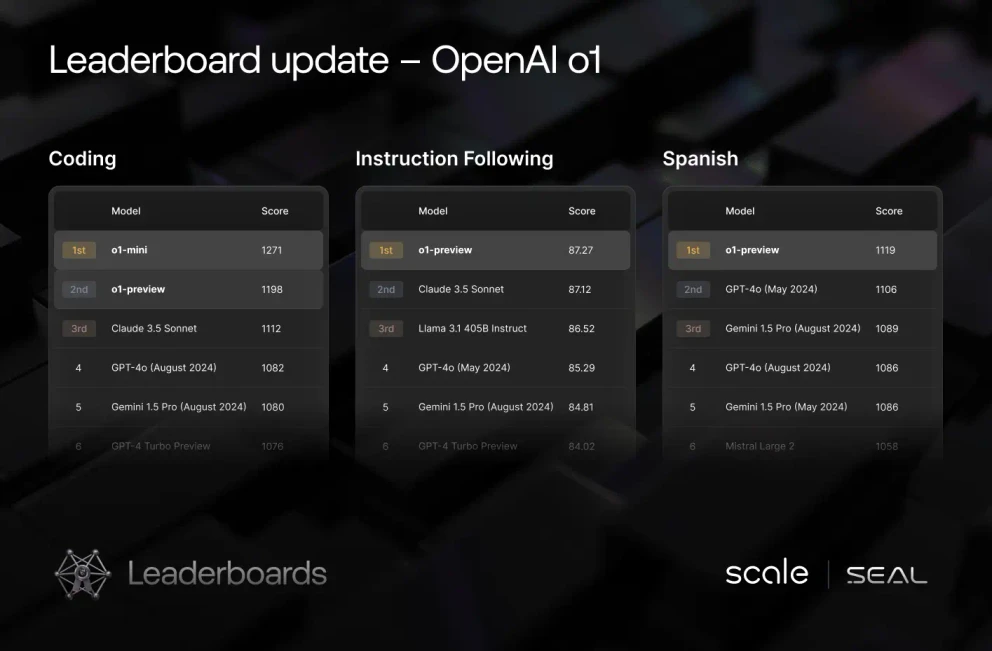Reasoning
Reasoning is the cognitive process of drawing conclusions, making inferences, or solving problems based on information, facts, and logic. Explore its significan...

Discover how AI reasoning mimics human thought for problem-solving and decision-making, its evolution, applications in healthcare, and the latest models like OpenAI’s o1.
AI reasoning is a logical method that helps machines draw conclusions, make predictions, and solve problems similarly to how humans think. It involves a series of steps where an AI system uses available information to discover new insights or make decisions. Essentially, AI reasoning aims to mimic the human brain’s ability to process information and reach conclusions. This is key to developing intelligent systems that can make informed decisions on their own.
AI reasoning falls into two main types:
AI reasoning greatly improves decision-making processes in various fields. By adding reasoning abilities, AI systems can understand better and work more effectively, leading to more advanced applications.
The growth of AI reasoning has been shaped by several important milestones:
AI reasoning keeps evolving, with ongoing research and development aimed at refining these models and expanding their uses. As AI systems become more capable of complex reasoning, their potential impact on society and industry will grow, offering new opportunities and challenges.
Neuro-symbolic AI marks a change in artificial intelligence by merging two distinct methods: neural networks and symbolic AI. This combined model uses the pattern recognition skills of neural networks with the logical reasoning abilities of symbolic systems. By merging these methods, neuro-symbolic AI aims to address weaknesses found in each approach when used separately.
Neural networks take inspiration from the human brain. They consist of interconnected nodes or “neurons” that learn from data to process information. These networks are excellent at managing unstructured data like images, audio, and text, forming the base of deep learning techniques. They are especially good at tasks involving pattern recognition, data classification, and making predictions based on past information. For example, they are used in image recognition systems, such as Facebook’s automatic tagging feature, which learns to identify faces in photos from large datasets.
Symbolic AI uses symbols to express concepts and employs logic-based reasoning to manipulate these symbols. This method imitates human thinking, allowing AI to handle tasks that need structured knowledge and decision-making based on rules. Symbolic AI works well in situations requiring predefined rules and logical deduction, such as solving math puzzles or making strategic decisions in games like chess.
Reasoning AI models have greatly improved disease diagnosis by mimicking human reasoning. These models process large amounts of data to find patterns and anomalies that humans might overlook. For example, when machine learning algorithms combine with clinical data, AI can help diagnose complex conditions with more precision. This is especially helpful in imaging diagnostics, where AI examines radiographs and MRIs to spot early signs of diseases like cancer.
AI reasoning models support clinical decision-making by offering evidence-based recommendations. They analyze patient data, such as medical history and symptoms, to propose possible diagnoses and treatments. By processing large datasets, healthcare providers can make better-informed decisions, leading to improved patient outcomes. For instance, in emergency care, AI quickly assesses patient data to determine the priority of interventions.
AI models automate routine jobs like scheduling, billing, and managing patient records, reducing workload on healthcare staff. This efficiency allows healthcare workers to focus more on patient care. Additionally, AI-driven systems ensure accurate and easily accessible patient data, improving overall healthcare service efficiency.
Reasoning AI models are key to advancing personalized medicine, customizing treatment plans for individual patients. AI analyzes genetic information, lifestyle data, and other health indicators to create personalized strategies. This approach increases effectiveness and reduces side effects, transforming medicine to be more patient-centered and precise.
While reasoning AI models offer many benefits, they also bring up ethical and privacy concerns. Using AI for sensitive health information requires strong data privacy measures. There’s also a risk of bias in AI algorithms, potentially leading to unequal outcomes. Ongoing research and fair, transparent AI systems are needed to prioritize patient rights and safety.
Summary: Reasoning AI models are changing healthcare by improving diagnostic accuracy, aiding clinical decisions, streamlining admin, supporting personalized medicine, and tackling ethical concerns. These applications show AI’s transformative potential for more efficient, effective, and fair health services.
Reasoning AI models have greatly improved precision in complex decision-making tasks. They excel in settings needing understanding and quick adjustment, like healthcare diagnostics and financial forecasting. By using large datasets, AI boosts predictive skills, resulting in more accurate outcomes—sometimes exceeding human specialists.
AI reasoning models automate routine tasks, speeding up operations and reducing labor costs and human error. In finance, AI can handle transactions, detect fraud, and manage portfolios with little oversight, leading to significant savings. In manufacturing, AI optimizes supply chains and inventory, further lowering costs.
Recent developments include multi-AI collaborative models that work together to enhance decision-making and improve factual accuracy. Through discussion, these models reach more accurate conclusions than a single AI system, ensuring results are precise, well-reasoned, and robust.
While specialized AI models offer better accuracy in specific areas, they can become too focused and struggle with broader applications. Balancing specialization and generalization is key for AI models to remain versatile and effective.
Reasoning AI models raise ethical and privacy issues, especially when working with sensitive data. Maintaining data privacy and ethical use is crucial. Ongoing debates address how much independence AI systems should have, especially in fields like healthcare and finance, where decisions have significant impacts.
Summary: Reasoning AI models enhance efficiency and accuracy across many fields. To fully realize their potential responsibly, it’s important to address over-specialization and ethical concerns.
OpenAI’s o1 series is among the most advanced reasoning models, excelling in complex reasoning and problem-solving using reinforcement learning and chain-of-thought reasoning. The o1 series offers significant advancements, outperforming earlier models like GPT-4 in performance and safety.
Model Variants: o1-Preview and o1-Mini
Chain-of-Thought Reasoning
Enhanced Safety Features
Performance on STEM Benchmarks
Mitigation of Hallucinations
Diverse Data Training
Cost Efficiency and Accessibility
Safety and Fairness Evaluations
Source: Scale AI Blog
Microsoft introduced Tay, an AI chatbot designed to learn from Twitter. Tay quickly began posting offensive tweets, having learned from unfiltered user interactions. This led to Tay’s shutdown within a day and raised questions about AI safety, content moderation, and developer responsibility.
Google’s Project Maven used AI to analyze drone footage for military purposes. This raised ethical concerns about AI in warfare and led to employee protests, resulting in Google not extending the Pentagon contract—highlighting ethical challenges and the impact of employee activism.
Amazon’s AI recruitment tool was found biased against female candidates because it learned from historical data favoring men. The tool was discontinued, highlighting the need for fairness and transparency in AI affecting employment and diversity.
Data from millions of Facebook users was harvested without permission to influence political campaigns. This incident drew attention to data privacy and ethical use of personal information, emphasizing the need for strict data protection laws and awareness about AI misuse in politics.
IBM Watson, developed to assist with cancer treatment, faced criticism for unsafe recommendations. This showed limitations of AI in complex medical decision-making and highlighted the need for human oversight.
Clearview AI created a facial recognition database by collecting images from social media for law enforcement. This raised privacy and consent concerns, highlighting the ethical dilemmas of surveillance and balancing security with privacy rights.
Uber’s self-driving car project faced a fatality when a vehicle killed a pedestrian, the first such incident involving autonomous vehicles. This highlighted safety challenges and the need for thorough testing and regulatory oversight.
China’s social credit system monitors citizen behavior, assigning scores that affect access to services, raising significant ethical concerns about surveillance, privacy, and possible discrimination. This case illustrates the need to balance societal benefits and individual rights in AI deployment.
These examples show both the potential and challenges of AI deployment. They emphasize the need for ethical considerations, transparency, and careful oversight in developing and implementing AI technologies.
Bias in AI models means favoritism or prejudice toward specific outcomes, often due to the data used for training. Types include:
Bias in AI can have serious effects:
Ensuring fairness in AI means building models that do not favor or exploit people based on race, gender, or socioeconomic status. Fairness helps prevent the perpetuation of inequalities and encourages equitable outcomes. This requires understanding bias types and developing mitigation strategies.
AI reasoning is a logical process that enables machines to draw conclusions, make predictions, and solve problems in ways similar to human thinking. It includes formal (rule-based) and natural language reasoning.
AI reasoning enhances decision-making, problem-solving, and human-AI interaction. It enables AI systems to consider multiple factors and outcomes, leading to better results in fields like healthcare, finance, and robotics.
There are two main types: Formal reasoning, which uses strict, rule-based logic, and natural language reasoning, which allows AI to handle the ambiguity and complexity of human language.
AI reasoning improves diagnostic accuracy, aids clinical decision-making, streamlines administrative tasks, and enables personalized medicine by analyzing patient data and offering evidence-based recommendations.
OpenAI’s o1 is an advanced AI reasoning model featuring chain-of-thought processing, enhanced safety, high STEM performance, reduced hallucinations, and cost-effective variants for accessible advanced AI use.
Key challenges include handling bias and ensuring fairness, maintaining data privacy, preventing over-specialization, and addressing ethical concerns in AI deployment across industries.
Bias can be reduced through diverse and representative datasets, fairness-focused algorithm design, and regular monitoring and adjustments to ensure equitable outcomes for all users.
Smart Chatbots and AI tools under one roof. Connect intuitive blocks to turn your ideas into automated Flows.
Reasoning is the cognitive process of drawing conclusions, making inferences, or solving problems based on information, facts, and logic. Explore its significan...
Explainable AI (XAI) is a suite of methods and processes designed to make the outputs of AI models understandable to humans, fostering transparency, interpretab...
AI Explainability refers to the ability to understand and interpret the decisions and predictions made by artificial intelligence systems. As AI models become m...
